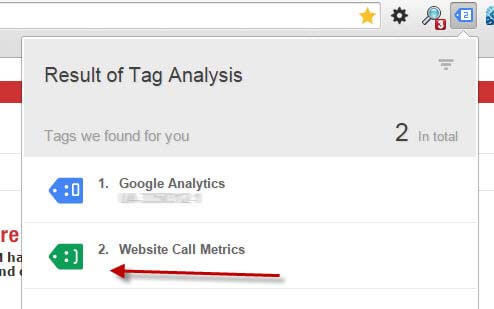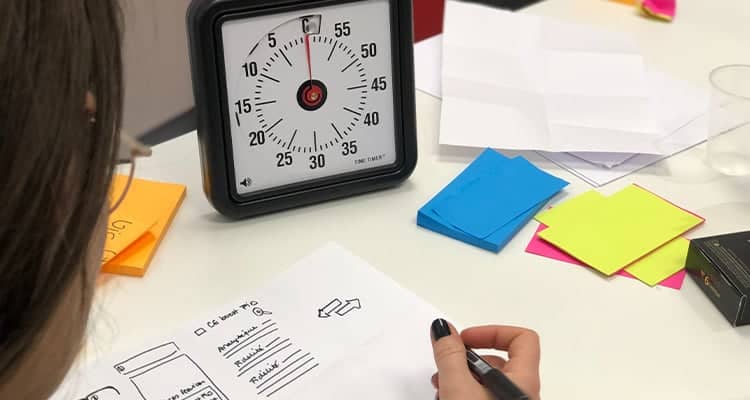Discover the power and pitfalls of call tracking with AdWords
You will never have successful Google advertising unless you set up conversion tracking in AdWords. With conversion tracking, advertisers can optimise campaigns for best CPA and ROI. Without conversion tracking you can never truly understand the value and profit produced by your Google advertising efforts.
Setting up conversion tracking in AdWords is easy but many advertisers neglect phone calls when it comes to monitoring their conversions. For some industries phone calls are the primary method for gathering leads and sales.
AdWords call conversion tracking is an excellent feature that enables you to track phone calls produced by your ads.

Call tracking combined with PPC is essential to certain business models. This is especially true for lead generation, businesses with highly priced items and service industries. However, it is not these industries alone who stand to benefit from AdWords call conversion tracking. E-commerce websites and local businesses have a lot to gain from tracking calls via AdWords, as well as onsite sales or form completions. There are always people who will prefer to convert over the phone, ask questions before they buy or need customer support from a real person.
By failing to utilise call conversion tracking you could be missing out on recording vital conversion data and correctly attributing conversions to your Google advertising campaigns.
Google AdWords call conversion tracking is a powerful tactic that should not be underestimated. It is tempting to think that phone calls are going the way of the dinosaurs, thanks to our increasingly digital world, filled with instant chat messaging apps but research shows that phone calls account for far more conversions than you might think.
Why are call conversions so important?
A remarkable 45% of all search engine related conversions take place over the phone. Industries including solicitors, estate agents, local services (e.g. plumbers, electricians), SaaS, hotels, mortgage lenders, loans, cars, education and technical support are all business areas where phone conversions show no sign of slowing down. In fact, in many of these industries phone conversions have actually been rising as the data from this Wordstream graph reveals:
As you can see from the infographic extract below from Invoca, by 2020 an astonishing 169 billion mobile calls are expected from customers to businesses.

42% of people currently call businesses at least once a week and 65% state they would prefer to ring a business rather than fill out a form.
It seems the rise of mobile searching has actively restored and inflated the value of phone conversions for conversations. Users are increasingly calling businesses directly from search results, primarily thanks to mobile browsing overtaking desktop. You can see even more amazing stats into phone conversions from Invoca’s research in their full infographic.
It is not just older generations who like to ring from search. While many businesses misguidedly believe millennials abhor talking on the phone, they have actually embraced the easy click to call mentality when it comes to communicating with businesses. 64% of millennials claim they do all their business research online, prior to buying and value speaking to someone over the phone to verify information before making a purchase.

Many businesses do already recognise the importance phone calls play to their profits, with 65% of businesses considering phone calls to be their most valuable source of leads.
From this data, we can clearly see phone calls should not be an afterthought when it comes to conversions. Tracking them is necessary to gain an accurate picture of your Google advertising conversion landscape.
Get familiar with Google AdWords call conversion tracking
Google’s options for call conversion tracking have grown increasingly sophisticated over the years. You now have several options for call conversion tracking to help you cover every corner and prevent missing out on vital calls produced from AdWords.
Conversions from call extensions
Within AdWords you can track conversions from call extensions. These are the phone numbers you choose to show within the ad itself in search.

When call extensions are enabled, it allows your phone number to show along with your ad copy and by enabling Google forwarding numbers, you can easily track these calls. One of the great features of Google AdWords call conversion tracking is that you can track the call as a conversion whether the user clicks to call or manually dials the number. This allows you to track both mobile, tablet and desktop users who spot the Google forwarding number and convert over the phone.
Google reports that 70% of customers use the click to call to convert, so enabling this feature is well worth it for your data.
To set up call conversion tracking from ads, you should set up a call extension first.
Head to ad extensions:

Select call extensions from the drop down:

Select the red + extension button:

Select + new phone number:

When adding the new number, ensure that you select to track the calls as a conversion.

Don’t forget to add the new number to the campaign and click save.

Now head on over to your tools tab:

Next select conversions from the drop down:

Then select the red + conversion button.

Select phone calls as the type of conversion you would like to track:

Now select the option to track phone calls from the number in your ad:

You can now fill out your specific criteria for the most accurate data:
-Name your conversion so it is easily identifiable
-Assign monetary value to your conversion to get a better idea of CPA or ROI
-Specify the length of your conversion window e.g. 60 days
-Specify the type of conversion it is e.g. sale or lead
-Select the length of time the call duration should be to count as a conversion
-Select your attribution model and whether you wish to count every call as a conversion or one per user:

Finally click save.
Conversions from a number on your website
While 70% is a substantially chunk of users converting from ads, other users prefer to gather more information before ringing up. Plenty of users will click through to your site to read more before clicking to call or manually dialling the number on your landing page. This is why Google introduced call conversion tracking for numbers on websites.
This means whether they dial from search or from your site, as long as that call was originally triggered by an AdWords ad, you can track it as a conversion. This is supremely beneficial for accurate attribution to your Google advertising.
Creating this kind of conversion is also straight forward and we recommend tracking both kinds of calls for the best results. Head to tools, conversions and the red + conversion button, as you would for call extension conversion tracking.
After selecting phone calls as your desired tracking method, select to track a number on your website.

You can set up the additional criteria just as you did with the extension tracking but this time you need to either set up a tag or add some code to your website, so users can see the dynamically generated Google forwarding number on your site having clicked on an ad.



Watch the video below from AdWords for more information on setting up call conversion tracking for numbers on your website:https://www.youtube.com/embed/vG7A3nGRmng
You are now set to proceed with proper call conversion tracking on AdWords but don’t forget to double check your website call conversion tracking code. By installing the handy Chrome extension Google tag assistant, you can always quickly check your conversion and remarketing tags are functional.

With any code added to your site for tracking there is room for error. If multiple marketers, content writers, designers and developers have access to your site, code can easily be accidentally removed or broken, so the tag assistant is a great way to catch errors when you first add code and further down the line when changes are made, before it ruins your data:

In addition to Google tag assistant it is always a good plan for advertisers to check that the dynamic Google forwarding number is functioning as expected. Unfortunately, this will require you to waste a tiny bit of money by generating your own ad to check the number and by clicking through to check the number on your site.
A positive call experience is also important, so it is recommended that you actually call the number as a test to make sure every stage of the process is working.
Conversions from call only campaigns
Google has increasingly recognised the importance of driving calls as conversions. Mobile campaigns, call extensions and call conversion tracking have helped businesses push phone calls in a whole new way through AdWords.
For those whose primary leads are calls, call only campaigns are not to be missed. Call only campaigns launched in 2015 and for these campaigns call tracking is not only ideal, it is vital to understand any real value.

As you can see from the image below, when setting up a call only campaign, Google encourages you to have calls reported as conversions and tracked:

For advertisers looking to gather as many calls as possible and remove any unnecessary steps where they might lose convertors, call only campaigns are a great choice. They reduce the length of your conversion funnel and make conversion data clearer, as users can only convert by phone call in this scenario.

Watch the video below for detailed instructions on setting up a call only campaign and don’t forget to select call reporting in your campaign set up and set up a conversion as you did for a call extension conversion:https://www.youtube.com/embed/bxjjqpwl4d0
Naturally Google AdWords is not the only kind of call tracking you can utilise in your efforts to gather call data from PPC. There are also many choices of third-party software, so how can you work out which you should use? With Google AdWords call conversion tracking, there are several pitfalls to be aware of that are specific to call conversions but there are also major advantages.
Advantages of Google AdWords call conversion tracking
1) It’s easy and free: Google AdWords call conversion tracking is designed to work with your AdWords campaigns, so it is therefore pretty easy to set up and it is free. With third-party software, you must pay for your subscription to the software on top of your AdWords budget. In addition to these extra costs you usually also have to pay for tracking numbers individually. This can get very expensive for small businesses, whereas AdWords call tracking is a cost-effective choice.
2) It offers dynamic number insertion: The Google AdWords call conversion tracking is very smart when it comes to your Google forwarding number. Rather than renting one number, it can change dynamically, which means users in a certain demographic location may see a local number appear, which instils trust and makes them more likely to convert. In this way Google isn’t only helping to track your call but its methods are actively involved with your CRO.
3) It provides easy integration with other Google services: Google’s call conversion tracking works seamlessly with Google Analytics and Google Tag Manager, so you can easily review all your data in one place. Other third-party systems may not be compatible or require additional onsite code (which could slow your site down further) and additional setup.
4) You gain a wealth of information: Google’s call tracking does not just tell you if you have landed a conversion but the times calls started and ended, call duration, area codes, phone through rate, average cost per call and whether the number was clicked or manually dialled. This is very useful data for assigning bids, CPA and understanding what methods are effective for your users and where users are coming from.
You can view the number of phone conversions, cost per call and phone through rates by adding columns to your Google AdWords dashboard report. Simply click columns:
Then in the call details section select phone calls, phone impressions, PTR and phone cost.

For more details on area codes, duration and whether the call was from an ad or your website, head to your dimensions tab:
 Then select call details from the drop down:
Then select call details from the drop down:

Google’s call tracking lets you easily identify which keywords produce the most calls and allows you to place your budget and bids accordingly. With the detailed information provided, you can gain an idea of which campaigns produce the most valuable calls by duration. The chart below from Wordstream demonstrates how advertisers could use data from call conversions to better understand which keywords are most effective:
Common pitfalls, limitations and disadvantages of Google’s call conversion tracking
Despite its many advantages and the excellent data you can obtain, Google’s call conversion tracking can still leave a lot to be desired. Google is continually working to improve the data offered to advertisers and there have been several recent changes to call tracking in AdWords. In spite of this, third-party software does have an edge in some areas.
- Google call conversion tracking is limited to the search network: This means any numbers that appear in your display ads which drove calls cannot be tracked by Google. This is a major oversight, as many conversions triggered by Google advertising will therefore not be recorded. This means you do not have a full picture of the success of your display campaign.
- It isn’t suitable for multiple numbers: One of the biggest weaknesses within Google’s call conversion tracking is the problem of multiple numbers. While you can now track multiple instances of the same number on a landing page, you cannot track multiple different numbers. Many companies have different numbers for customer services and sales or even different departments within product sales. This is therefore a big disadvantage for Google, as most third-party call tracking software allows different tracking for different numbers.
- It only works for AdWords: While this limitation makes sense, since you are using it for your PPC campaign, it does mean third-party software can provide greater information. Many third-party call tracking software, such as Call Metrics and Call Rail, allow you to track calls from various sources e.g. PPC, social ads, organic search, email marketing. This means you can really compare the success of different channels in terms of producing calls as you can for onsite conversions.
- It does not record conversations: Google’s option really is about conversion tracking more than it is a call tracking feature. Call tracking software traditionally feature call recording, so you can improve the users’ experience. By recording the conversations, you can continually test and improve the user experience and drive conversions. AdWords’ call conversion tracking does not aid CRO for calls to this degree. Most third-party systems also record the number the user dialled from, so you can actively chase up a lead you know is from your PPC marketing. Since Google only shows the area code and only sometimes, this is not very helpful.
- It records all calls as conversions: This pitfall means it is virtually impossible to work out whether the call really was a conversion with the AdWords system. You cannot differentiate between customer support calls who came via an ad, those just enquiring but not ready to commit yet, leads and full-blown sales. This makes gauging your ROI and CPA much harder. Since many third-party systems record calls and integrate into your CRM systems, it is far easier to pin down the type of call coming for your Google advertising.
- The dynamic numbers expire: Third-party call tracking usually allows you to buy and keep your tracking numbers for various channels but with AdWords you are on a time limit. The dynamic numbers are only relevant for around 90 days. This means if a user saw an ad or clicked through to the site and wrote down the number to call at a much later date then you are going to have a problem.
- Phone tracking cannot be integrated into Google Analytics: While most AdWords data can be read in Google Analytics, it is not so for call conversions. Without third-party software, Google Analytics is incapable of recording calls as conversions. If you could track phone call conversions both from paid search and organic, along with which keywords and content were driving them, as well as the nature of those calls and integrate it all with your CRM, you would be in a strong position. It would allow you to make decisions about your digital marketing that influence phone calls and put budgets behind the most viable campaigns more accurately to produce best ROI. This is why many advertisers choose third-party software.
However, advertisers also need to be aware of the pitfalls within third-party software. Always check it can be integrated with your chosen CRM, Google Analytics and AdWords.
- Google call conversion tracking is not available everywhere: Google’s option for tracking calls is only available in the following countries:
Australia Belgium Canada Czech Republic Denmark France Germany Hungary Ireland Israel Italy Japan Mexico Poland Romania Russia Slovakia South Africa Spain Sweden Switzerland United Kingdom United States
- There is no request a call back function: Some third-party software will even add a request a call back widget on a tracked number from AdWords to help scoop up any missed conversions if your sales team were not available.
It may seem like Google’s call conversion tracking is the weaker specimen compared to other software but it is still a great system if you are not yet ready to invest in more expensive software.
Finding reliable call tracking software, which can be integrated with your other systems, is often very expensive, which rules it out as an option for smaller businesses.
For a free service, the Google AdWords call tracking provides a wealth of information and it is constantly being improved.
Perhaps advertisers can even look forward to Google purchasing a call tracking firm in the future. The frequent updates do suggest they are looking to reduce the advantages of third-party systems.
In July 2016 Google made one of its biggest improvements to the call conversion tracking system. They introduced the ability to import call conversions e.g. from in-house records, third-party systems and call centre logs.

The imported file must include caller ID, call start time and duration. This is naturally a fantastic feature for those using third-party software for call tracking but want to see all their AdWords data in one place. It will make it far easier to work out ROI and make meaningful data driven decisions for pushing calls.
In late 2016 Google made another helpful improvement to their call tracking. Now advertisers only need to add one piece of tracking code to their website even if their number is listed in multiple positions on their landing page. They will still need to add a small JavaScript snippet to replace each number but it is a significant reduction on excess code and simplifies the setup.
Recent changes to AdWords call conversion tracking
On January 19th, 2017, a somewhat more controversial change was made. For advertisers who utilise both location extensions and call extensions it has actually created some concern. To provide greater consistency your Google My Business listed number will now show in ads for your relevant location.

The change will benefit some advertisers, such as department stores, where a user is highly likely to wish to contact their local branch. However, for some small local stores it could be an issue. If they are not set up to handle the call volume, some would prefer to direct calls to their head office, while still showing their nearby locations.
For those using third-party tracking with AdWords, it could cause even bigger problems with data from calls on paid and organic business listing mixed. Multi-location businesses will start to see fewer calls coming in through their call extensions, and more coming in through the Google My Business numbers. It could be unclear whether these were prompted by an ad or organic search.
It has led to many advertisers opting to disable their location extensions in order to retain the advanced call tracking options.
Even recently Google has been busy with yet more changes for call tracking. In May, they added automated call extensions. This will help advertisers ensure their customers can always ring them. It will draw numbers from advertisers’ landing pages. This update is nothing to worry about because your manual call extensions and tracking will override the automated extensions and if, for whatever reason, you do not wish to show a phone number, you can disable the automated extension.
How to drive more call conversions
You should now have a thorough understanding of the importance of call conversion tracking and how to implement this tracking in AdWords. By understanding the potential power and drawbacks of the AdWords call tracking system, advertisers can make an informed opinion on whether they will require additional software. Strangely, despite the clear importance of call tracking, many advertisers forget to optimise for phone conversions.
They are so used to A/B testing and improving landing pages that they neglect the call experience itself as integral to driving conversions. Once you have mastered call conversion tracking, advertisers should turn their attention to actively encouraging better conversions via calls.
Shockingly, research from Call DNA found that up to 1 in 5 calls are abandoned:
There are so many features which can put off users and cost you a conversion when it comes to phone calls:
- Did the phone keep ringing too many times, encouraging the user to get bored and hang up?
- How many hoops did they have to jump through to be connected to the right department? Did they have to repeat their question or problem several times to different departments?
- Do you put people on hold? How long for? Do you have waiting music? How annoying is your wait music?
- Do the users usually end up talking to a person or a machine and how helpful is that answer message or the staff member on the other end?
Looking from a user’s perspective you can see there is a great deal of potential problems that could irritate and prevent conversion. Call tracking that actively records conversations is an ideal way to solve these issues but there are a number of other ways you can improve the CRO of your calls:
- Test your phone experience from the user perspective
You don’t always need call recording. Sometimes you just need a few randomly placed, good old-fashioned tests. Have an impartial friend or family member call your business every so often to test the experience. This will help you identify some of the core issues like long hold times and bad customer service.
- Look out for negative feedback on other channels
Of course, with random tests you can still miss problems. Even call recording can let you down if a user decided to not air their grievances in the call itself. Sometimes when users’ have a poor experience they will complain on a completely different channel. Always check channels outside of AdWords, such as social media and any review sites for negative feedback relating to calls. Even when it is only one complaint and you cannot satisfy that user, it is an opportunity to learn and improve for the future.
- Invest in trained staff
Don’t underestimate the value of staff and their knowledge in customer service. Call centre staff are often undervalued despite their essential training in sales tactics and customer relations. Those answering calls should have conversions in mind and be well equipped to handle enquiries relating to all your services. This is an area where small businesses can let themselves down. General staff who are untrained in sales or customer service may not be able to deliver the right experience to push conversions.
Surprisingly call centres with trained staff have a much lower hang up rate than local businesses who lack those resources:
- Bid to drive calls
Increase bids on high intent keywords for call focused campaigns. This will allow you to give priority to those callers looking to buy rather than just enquire or looking for customer support. This tactic can increase your cost per call significantly but also ensures you drive more useful calls, rather than wasting money on calls that aren’t really conversions:

- Embrace local numbers
While Google’s dynamic keyword insertion can create local numbers, you should consider buying local numbers for organic landing pages too and embracing the location extension along with your local Google My Business number.
According to Clicteq, a recent study from Engineready showed that users were considerably more likely to call if they saw a local area calling code as opposed to a national toll-free number:

- Use scheduling for call extensions and day parting for call only campaigns
Don’t aggravate users and lose conversions by driving calls when there is no one there to answer. This is so easy to avoid, even if you want most ads to run all the time. You can add scheduling specifically to the call extension part of your ad. This way the ad will still run when you are closed but not display the number and start displaying the number when your business is open. If you are running a call only campaign where the number is the headline, it is best to use day parting, rather than have users forwarded to an answering machine.
- Always assign a value to your call conversions
By assigning an appropriate value you can better calculate a rough ROI and gain more helpful data from your calls.
While it is difficult in AdWords to work out which calls were real leads or sales, an open line of communication with your sales team and a few calculations can save the day.
By talking to your sales team, you can work out what percentage of calls led to conversions on average. Be sure to look at a large enough window of time for greater accuracy. If you then work out your average sales value, this gives you the approximate worth of your call. Enter this as the monetary value for your call conversions. You will therefore have better reports reflecting more accurate CPA for calls versus website conversions and more opportunity to aim for a positive ROI.
Keeping lines of communication open with your sales team also has other benefits. Without investing in expensive third-party software, it is the only way to gain insight into the types of calls you are receiving to gauge whether the majority are leads or sales or customer service.
Google’s inability to distinguish between call types can inflate conversion rates. Clicteq’s data shows that only 19% of calls to businesses are new enquiries, so it is important to have a firm grasp on the value of the majority of your calls to enable appropriate bid assignments.

- Look out for short call duration
Regularly review your call details report. If you see a large period of all short call duration, it could be an indication something is wrong with your tracking or Google forwarding number or phone system.

By following these simple call optimisation methods, you can mitigate some of the limitations of Google AdWords call conversion tracking and help make those calls more valuable by increasing the chances of a sale. This will succeed in making your AdWords call conversion tracking even more powerful.
